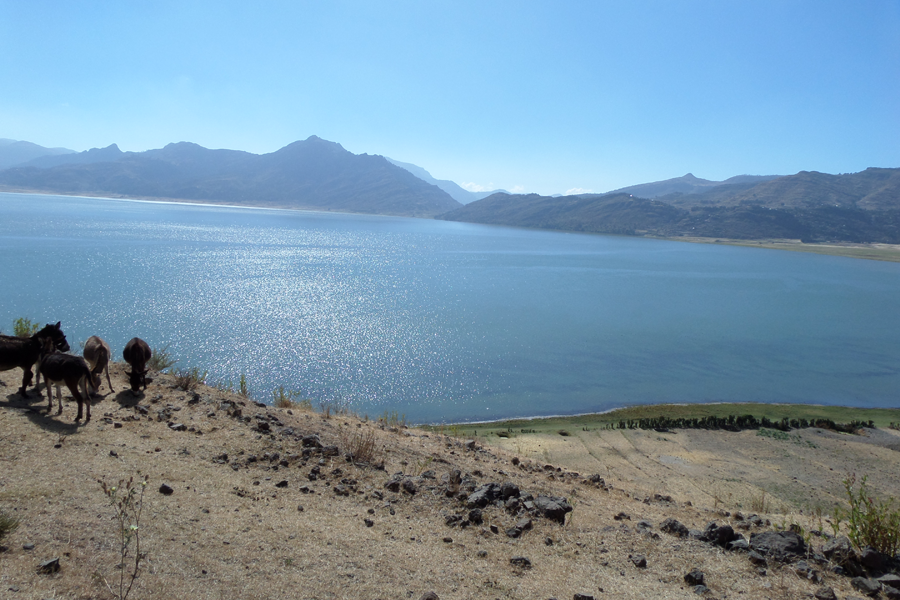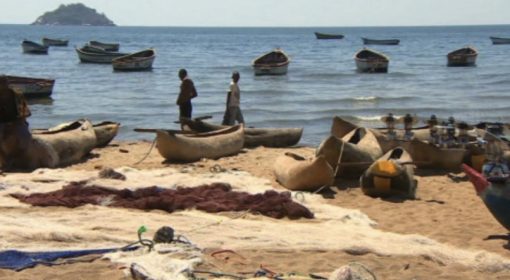By Frank van Steenbergen, Eyashu Yazew Hagos and Shimbahri Mesfin
April 29, 2015

Postcard from Lake Hashenge, Tigray, Ethiopia. It is eery beauty at its best – a quiet mountain lake at the bottom of a huge valley, tranquil and with only few houses near it. The legend about the origin of the lake, as told by elders, is intriguing: reminiscent of the myths of the Noah’s biblical flood and the Greek drama of Orpheus and Euridice.
According to the tale, long time ago, the area that is now Lake Hashenge was farm land with ample rainfall and abundant crops. Once up on a time, there was a big wedding celebration and a sumptuous feast. As a test of faith, Saint Mary disguised herself as a hungry beggar and appeared at the feast, humbly asking for food. Yet no body wanted her to be close, let alone give her a morsel of food. Rejected at the wedding, she wandered to the houses in the village. All houses except one were closed: every body was enjoying the wedding party. Finally, Mary entered the one open cottage, explained her hunger and asked for food. The woman inside the house had just given birth and told her that she was in no position to prepare food, yet invited Mary into her kitchen. The woman was in need of food herself as well but there was no one in the village to help her since all were at the wedding.
Mother Mary then revealed her true identity and explained her disappointment at the lack of compassion by the people of the village. She informed the woman that she would flood the village and told her to quickly pick up her newborn and leave the place. She also warned the woman to not look back at the village, whilst she was leaving. Would she do so, she would turn into stone. The mother and child fled their home and Mary turned the residential area upside down, caused terrible rains out of which Lake Hashenge was formed. Unfortunately, the woman after traveling some distance could not resist and turned her face back to see what had happened to the village. She turned to stone with the child on her back.
Many years later, a local boy cut the head of the petrified child. Blood oozed out. After this, rain no longer came to area. The people of Hashenge prayed hoping for a change, yet drought continued to prevail. Finally, the priests buried the remaining part of the stone child and good days returned. The stone woman remains standing near Lake Hashenge: she is known as “Tikul Dingay”. For many years no one in Hashenge dared to eat fish from the lake, as people were afraid they would be eating the flesh of their ancestors.
Fast forward from times of the legend to 1936 and tragedy repeated itself, this times at the hands of the invading Italian army. Having been defeated as the first western power by an African nation in the Battle of Adwa of 1887, Italy under Mussolini in 1935 sought to revenge itself and occupy Ethiopia. No bars were held. In conquering the Ethiopian highlands Italian planes sprayed another deadly rain – water mixed with sulphur mustard. This chemical warfare in the end killed 15,000 persons in Ethiopia as Ethiopian soldiers with thin clothes and sandals were defenseless against the impact of the mustard gas. Several towns were targeted by sorties of planes and the deadly gas was deployed at two major battles. So were remaining troops of the Ethiopian army targeted near Lake Hashenge in April 1936.
Emperor Haile Selaissie protested at the League of Nations (the predecessor of the United Nations), but whatever he said fell on deaf ears. Italy and Ethiopia had signed the Italo-Ethiopian Treaty of Friendship in 1928 and as a member of the League of Nations Italy was obliged not to initiate a war. The Treaty of Friendship called for peace between the two nations for at minimum 20 years. It stated that the resolution of disputes should be referred to the League of Nations. All to no avail. Italy’s victory and temporary annexure of Ethiopia of 1936 was the opening accord of the Second World War. Injustice was ignored at a high cost. Nothing has changed.


